Unlocking The Severn – Archive Research
- 5th May 2022
Have you seen the Unlocking the Severn exhibition in The Hive atrium? This major project aims to bring back the Shad (an important rare fish which used to be common on the Severn; encourage more people to visit and enjoy the River Severn; use the river to help people learn and enrich their lives; and work with volunteers to discover and share more about the river’s heritage and science.
We have worked with the project in a number of ways. We ran archive workshops to help people investigate aspects of the river’s past, which could then be passed on the project team and potentially be used within the exhibition. Our archaeologists worked at several of the sites were fish passes were constructed, so record any archaeology uncovered. We also have created our own small display in our cabinets on level two about archaeology of the River Severn.
The River Severn is important to many people, and has payed an important part in the county’s history. It has been extensively used for trade and navigation, and many settlements are located along it’s banks. It is also important for leisure, with many people spending happy times along it, or even on the water. Annual floods are important for flood meadow ecology, although significant floods badly affect communities. We know how popular the river is from the popularity of our social media posts which feature it, such as the frozen river at Bewdley image which was seen over 40,000 times! Old photos of the river always attracts interest and quite often memories.
The Unlocking the Severn project wanted to look into the River Severn heritage, and at the different hubs, of which Worcester was one, they wanted local people to look into the history through the archives and pick out stories which could be used for the exhibition and interpretation.

In 2019 ten people signed up for a 6 part workshop to help them use the archives, and then help them investigate a part of the river’s story which interest them. It was fascinating to see what people were interested in and what they found.

Map of the Severn Navigation 1892
Apprenticeships
Within the archives are collections of apprenticeship indentures. Several of these are linked the river, including as watermen and fishermen. One lady went through picking out these and listing them.
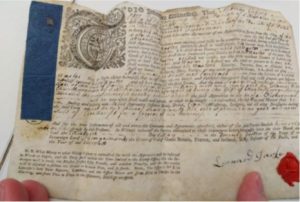
Apprenticeship indenture for Daniel bate of Kidderminster to Aaron York of Kidderminster, Waterman, 1765
Lincomb Lock
Over the year problems developed in large boats travelling up the river. Various changes were made to the river, including introducing locks, to enable a deeper draught.
One lock was at Lincomb, and this the focus of another project.
In 1837 a map was produced for the River Severn showing the various proposed navigational improvements. The copy lodged with the Worcestershire Quarter Sessions shows that the proposed dam, lock and cut for Lincomb was actually located further from Stourport near the Hampstall Inn and Ferry in Astley
Bevere Island
Bevere Island, to the north of Worcester, has many stories associated with it. It is said to be the refuge of the people of Worcester over the years. In n 1051 King Hardicanute sent officials to Worcester to collect taxes, who were assaulted and murdered. When men were sent by the King to extract for retribution the local people fled to Bevere Island, until they agreed to pay a large fine. Later it was a refuge for those wanting to avoid the plague. It was also another location of a lock. With all these stories, plus the natural history, people are fascinated by it, and one person decided to look into the island.
Waterman’s Church
In 1842 the Albion barge was converted into a floating chapel, ‘Worcester Episcopal Floating Chapel’. Linked to St Clements Church, it was created to serve the needs of the community who travelled up and down the river with work. It provided a base for support and help, as well as being a place specially put aside for them to attend church services.
This has attracted people’s interested over the years, and was another project as part of the research.
The 1851 Religious census said that on a specific Sunday in March 16 attended in the morning and 114 in the afternoon. It reported that during floods they cannot hold services! It also reports from attendees how much they value it.
A number of years later a School was founded for Watermen’s families, with 150 attending.
Other sources in the archives are a couple of books about the chapel, a dissertation, as well as original archives – the Chapel Service book, providing details of each service; Easter Offering; and Trustee Minutes. It is also mentioned often in newspapers.

Engraving of Worcester Bridge, with Waterman’s Chapel to the left. c1859
The Worcester and Birmingham Canal Company – Tales From A Log Book
One man went through the log books from Diglis Locks, which listed cargo and amounts. When the canal opened in 1815 coal was the main cargo, but hay, chemicals, salt, bricks and stone were also carried. Cargo also went up the canal too.
The focus for this research was 1898-99
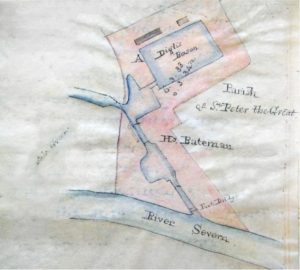
An Original Drawing of the planned connection of the Worcester & Birmingham canal and the River Severn at Diglis Basin
We also had people look into references to Shad fishing in the newspapers; going through a manuscript ‘The History of the Net Fishermen of Worcester’ by Anthony Clarke; the effect of the new locks on Bewdley, and Frederick Allies, fishing tackle maker of Worcester.
The sessions were really enjoyable, and people loved being able to go through documents from the archives. Lots of fascinating stories and facts were shared. At the end people sent their research to Lucy, the Project officer for Unlocking the Severn, and this was then passed on to the team creating the exhibition.
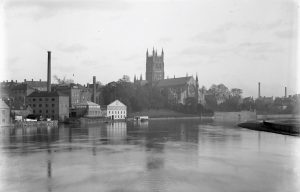

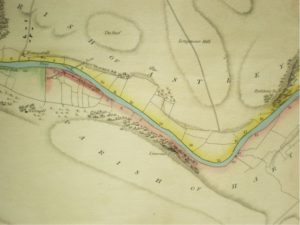
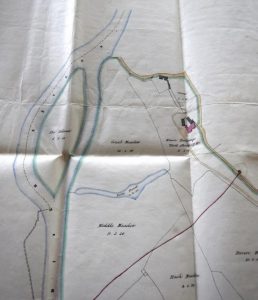
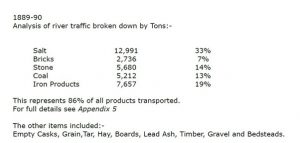
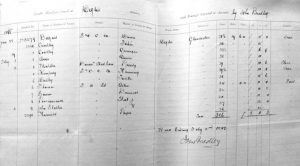
It’s interesting to see the mention of the Waterman’s Chapel in this blog. Since being a resident on one of our many canals I recognise this type of facility still in use today with the vaccine boats travelling up and down the country to help canal residents access covid vaccines and boosters.